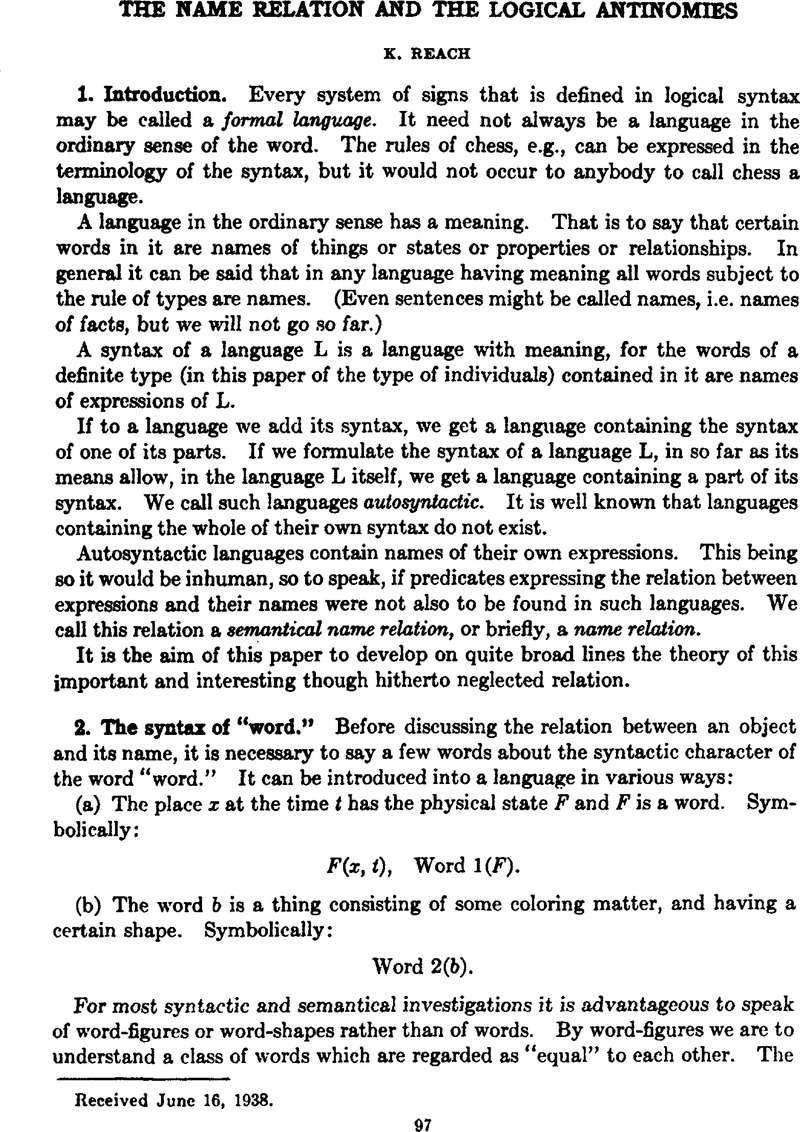Article contents
The name relation and the logical antinomies
Published online by Cambridge University Press: 12 March 2014
Abstract

- Type
- Other
- Information
- Copyright
- Copyright © Association for Symbolic Logic 1938
References
1 On the concept “abstraction class,” cf. Rudolf Carnap, Abriss der Logistik 20 b.
2 Cf. Whitehead and Russell, Principia mathematica *33.
3 Rudolf Carnap, Logische Syntax der Sprache. (Abbreviation: Synt.)
4 Tarski, Alfred, Der Wahrheitsbegriff in den formalisierten Sprachen, Studia philosophica, vol. 1 (1935)Google Scholar. In this paper Tarski also gives a definition for the relation “x designates a” which is identical with Carnap's SZ.
5 The author formulated this idea in 1932. The same idea is to be found in a lecture by Helmer, in the Actes du Congrès International de Philosophie Scientifique, Paris 1936, part VIIGoogle Scholar. Unfortunately Helmer applies this idea in a way which the present writer cannot approve of.
6 “Real variable” in the terminology of Principia mathematica.
7 Cf. Principia mathematica *70-*72.
8 “Gliedzahlen,” cf. Synt.
9 Cf. Synt.
10 Principia mathematica *30.
11 Gödel, Kurt, Über formal unenlsckeidbare Sätze der Principia Mathematica und verwandter Systeme I, Monatshefte für Mathematik und Physik, vol. 38 (1931)Google Scholar.
12 Tarski, loc. cit.
13 In his paper “Satz V.”
14 “∼Sb;K[x]” means “∼(Sb;K[x]).”
15 Proof
(Sb[x](y).Sb[x](z)) ≡ (∃F, G)(Nm[ź]](x).Mn[F[x]] (y). Nm[G[x]](z)).
“F[ź]” is cognate with “G[ź]” and thus we may, according to Dd 1, in the sentence after the equivalence sign put “F” for “G.” By axiom A 2 we get G 6.
- 17
- Cited by




